





Nitroglycerine
Application instruction:
 Nitroglycerine – the vasodilating drug used for stopping of attacks of stenocardia.
Nitroglycerine – the vasodilating drug used for stopping of attacks of stenocardia.
Form of release and structure
Nitroglycerine is produced in the following dosage forms:
- Tablets are hypoglossal: almost white or white, ploskotsilindrichesky, with a rough surface (on 40 tablets in the polymeric test tube which is densely corked by a polymeric stopper on 1 test tube in a cardboard pack);
- Spray hypoglossal dosed: colourless, transparent (in bottles or cylinders on 200 doses (10 ml), on 1 bottle or a cylinder in a cardboard pack complete with the dosing mechanical pump);
- Concentrate for preparation of solution for infusions: colourless, transparent (in ampoules on 2, 5 or 10 ml, on 5 ampoules in blister strip packagings, on 1, 2 or 10 packagings in a cardboard pack).
Hypoglossal is a part of 1 tablet:
- Active agent: nitroglycerine – 0,5 mg (in terms of 100% substance);
- Auxiliary components: sugar (sucrose) – 7,9 mg, glucose (dextrose) – 9,3 mg, potato starch – 9,3 mg.
Hypoglossal is a part of 1 dose of spray:
- Active agent: nitroglycerine – 0,4 mg;
- Auxiliary components: 95% ethanol (in the form of 1% of solution).
For preparation of infusion solution is a part of 1 ml of a concentrate:
- Active agent: nitroglycerine – 1 mg;
- Auxiliary components: a dextrose, sodium chloride, dihydropotassium phosphate, water for injections.
Indications to use
- Stenocardia (stopping and short prevention of attacks of stenocardia before emotional pressure or an exercise stress);
- Acute myocardial infarction, including (infusion solution) complicated by an acute left ventricular failure;
- Fluid lungs (infusion solution);
- Unstable stenocardia (infusion solution).
Contraindications
Absolute:
- Collapse;
- Age up to 18 years (efficiency and safety of use of Nitroglycerine for this age group of patients are not established);
- Hypersensitivity to drug components.
Depending on a dosage form, additional absolute contraindications to use of Nitroglycerine are the following diseases / states:
- Glyukozo-galaktozny malabsorption (tablets hypoglossal);
- Shock (hypoglossal spray and tablets);
- Cardiogenic shock, except cases of holding actions for maintenance of end diastolic pressure (spray hypoglossal);
- Heavy arterial hypotension with a systolic arterial pressure below 90 mm of mercury. (spray hypoglossal);
- Chronic cardial compression (spray hypoglossal);
- The stenocardia connected with a hypertrophic subaortic stenosis (spray hypoglossal);
- Acute myocardial infarction and chronic heart failure with the low filling pressure of a left ventricle (spray hypoglossal);
- Pericardium tamponade (spray hypoglossal);
- Any states connected with increase in intracranial pressure (spray hypoglossal);
- Heavy stenosis of the mitral and/or aortal valve, primary pulmonary hypertensia (spray hypoglossal);
- Simultaneous use with phosphodiesterase-5 inhibitors, including vardenafit, sildenafit, tadalafit (tablets and spray hypoglossal).
Relative (Nitroglycerine should be applied with care after ratio assessment advantage/risk):
- Hemorrhagic stroke;
- Heavy anemia;
- Thyrotoxicosis;
- Heavy renal failure;
- Closed-angle glaucoma;
- The head injuries postponed in recent time;
- Intracranial hypertensia;
- Cardiac tamponade (tablets hypoglossal and infusion solution);
- Liver failure (tablets hypoglossal and infusion solution), heavy liver failure (spray hypoglossal);
- Arterial hypotension with low systolic pressure – is less than 90 mm of mercury. (tablets hypoglossal and infusion solution);
- Orthostatic hypotension and tendency to development of orthostatic hypotension (spray hypoglossal);
- Alcohol abuse (spray hypoglossal);
- Epilepsy (spray hypoglossal);
- Migraine (spray hypoglossal);
- Chronic cardial compression (tablets hypoglossal and infusion solution);
- The isolated mitral stenosis (tablets hypoglossal and infusion solution);
- Hypertrophic cardiomyopathy (tablets hypoglossal and infusion solution);
- Toxic fluid lungs (infusion solution);
- Idiopathic hypertrophic subaortal stenosis (tablets hypoglossal), aortal stenosis (infusion solution);
- Acute myocardial infarction, chronic heart failure with the low pressure of filling of a left ventricle (a tablet hypoglossal and infusion solution);
- Uncontrollable hypovolemia with a normal or low pulmonary pressure at patients with heart failure (infusion solution);
- Shock, including cardiogenic, except cases with rather high pressure of filling of a left ventricle, including provided with medicines with positive inotropic action or intra aortal counterpulsation (infusion solution);
- Hematencephalon (infusion solution);
- The expressed cerebral atherosclerosis (infusion solution);
- Pregnancy and the period of a lactation (for all forms of drug);
- Advanced age (infusion solution).
Route of administration and dosage
Tablets are hypoglossal
For the prevention of complications Nitroglycerine is recommended to be accepted on doctor's orders.
Drug is accepted (sublingual) under language, holding a tablet in a mouth to a full rassasyvaniye, not swallowing.
Nitroglycerine needs to be accepted at once at emergence of the first signs of development of an attack of stenocardia or before an estimated exercise stress or emotional pressure. A single dose – 1 tablet. At stable stenocardia the effect can occur and from a smaller dose, in this case the tablet rest which did not manage to resolve, is recommended to be spat out. In most cases (at 75% of patients) improvement is noted for the first 3 minutes of use of Nitroglycerine.
If within 5 minutes the attack of stenocardia is not stopped, it is necessary to take 1 more pill.
In cases of lack of therapeutic effect after reception of 2 tablets it is necessary to see a doctor immediately.
Spray hypoglossal
Enter on or under language, it is more preferable – in a sitting position, at breath holding. After a vspryskivaniye spray is not swallowed at once, and held, having closed a mouth for several seconds.
In order to avoid complications Nitroglycerine should be applied on doctor's orders.
At emergence of the first signs of an attack of stenocardia enter 1-2 doses of spray (depending on weight). Introduction of 1 more dose, but no more than 3 doses (1,2 mg) within 15 minutes is in case of need possible.
If after use of 3 doses for 15 minutes the state did not improve, it is necessary to consult with the doctor.
The maximum single dose – 3 doses of spray.
With the preventive purpose appoint on 1 dose in 5-10 minutes prior to estimated loading or a stress.
Before use packaging with spray should not be stirred up. When spraying the bottle needs to be held vertically.
Infusion solution
Speed of intravenous administration of Nitroglycerine is selected individually, considering the arterial pressure, heart rate, the central venous pressure, an ECG and other indicators. Solution should be entered through инфузомат or the automatic doser, allowing to dose precisely it and to control an introduction rhythm.
Administration of Nitroglycerine by means of usual system for transfusion of liquids provides dosage accuracy in the way with calculation of number of drops of the poured liquid. Before introduction previously Solution Nitroglycerini is parted in 0,9% solution of sodium chloride or 5% solution of glucose (dextrose) to concentration of 0,01%. It is not necessary to apply other solvents.
It is reasonable to use glass and polyethylene tubes as active agent on walls of tubes from polyvinylchloride is absorbed (losses can make 40-80%). Solution Nitroglycerini quickly collapses on light therefore the system for transfusion and bottles needs to be shielded lightproof material. Storage of solution in the opened ampoule is not allowed.
Initial rate of administering of solution makes 0,5-1 mg an hour, the maximum speed – 8-10 mg an hour.
The recommended concentration and rate of administering of Nitroglycerine make: 1 mg/h (0,0166 mg/min.) – 24 mg a day via the automatic doser (volume of solution of 1 mg/ml) or 240 mg a day through system for intravenous administration (volume of solution of 0,1 mg/ml); rate of administering – 3-4 drops one minute (1 ml corresponds to 20 drops).
Duration of therapy is defined by clinical indications and can vary from several hours to 2-3 days.
Side effects
- Central nervous system: weakness; seldom – psychotic reactions, uneasiness, a disorientation, block;
- Alimentary system: dryness of a mucous membrane of an oral cavity; seldom – vomiting, nausea, abdominal pain;
- Cardiovascular system: headache, dizziness, heat, tachycardia, lowering of arterial pressure; seldom (in particular at overdose) – cyanosis, an orthostatic collapse, strengthening of symptoms of stenocardia (paradoxical reaction to nitrates); sometimes – a collapse with a loss of consciousness and a bradyarrhythmia;
- Local reactions: burning under language, a dermahemia;
- Allergic reactions: seldom – an itch, skin rash, exfoliative dermatitis;
- Others: seldom – a hypothermia, a sight illegibility, a methemoglobinemia.
Special instructions
It is not necessary to exceed the therapeutic doses specified in the instruction.
Hypoglossal Nitroglitserina contains in 1 tablet 2,65Ch10-3 GU (grain units).
During therapy perhaps considerable lowering of arterial pressure and development of dizziness upon sharp transition to vertical position from a prone position or sitting, and also in hot weather, during the performing of physical exercises or alcohol intake.
At preservation or considerable expressiveness of an illegibility of sight or dryness of a mucous membrane of an oral cavity treatment needs to be interrupted.
As well as to other organic nitrates, to Nitroglitserin at frequent use accustoming can develop (in this case increase in a dosage will be required).
Expressiveness of a headache during therapy can be reduced by reduction of a dose of drug and/or a concomitant use of validol.
At frequent attacks of stenocardia it is recommended to apply the prolonged medicines of a nitroglyceric row.
During Nitroglycerine use the use of alcoholic beverages is strictly forbidden.
Alcohol is a part of spray hypoglossal that is important for the feeding and pregnant women, patients with functional disturbances of a liver, epilepsy, craniocereberal injuries and other diseases of the central nervous system, and also at an alcohol abuse.
Glucose (dextrose) is a part of infusion solution that patients need to consider with a diabetes mellitus.
At an acute heart failure or an acute myocardial infarction Nitroglycerine should be applied only on condition of careful clinical observation of a condition of patients.
Not to allow increase of attacks of stenocardia it is recommended to avoid sharp drug withdrawal.
For prevention of undesirable lowering of arterial pressure rate of administering of infusion solution of Nitroglycerine needs to be selected individually. Lowering of arterial pressure can be observed not only at selection of rate of administering of solution, but also later, against the background of originally stabilized arterial pressure (control it is necessary to carry out at least 3-4 times an hour throughout all time of infusion).
Undergoing earlier treatment by organic nitrates (isosorbide-5-mononitrate, dinitrate isosorbide) higher dose for obtaining desired hemodynamic effect can be required by patients.
During use of Nitroglycerine it is necessary to be careful at control of motor transport and performance of potentially dangerous types of the works demanding the increased concentration of attention and bystry psychomotor reactions.
Medicinal interaction
At simultaneous use of Nitroglycerine with some medicines there can be following effects:
- Vazodilatatora, antihypertensives, inhibitors of an angiotensin-converting enzyme, inhibitors fosfoyodiyoesterazy-5, blockers of "slow" calcium channels, tricyclic antidepressants, ethanol, diuretics, beta adrenoblockers, monoamine oxidase inhibitors, procaineamide: strengthening of hypotensive effect of nitroglycerine;
- Digidroergotamin: increase in its content in blood and increase in arterial pressure;
- Heparin: decrease in its efficiency;
- Acetylsalicylic acid: increase in level of nitroglycerine in blood and strengthening of its action.
Terms and storage conditions
To store in protected from light, the place, unavailable to children.
Period of validity:
- Tablets are hypoglossal: 2 years at a temperature up to 25 °C;
- Spray hypoglossal: 2 years at a temperature up to 15 °C;
- Concentrate for preparation of solution for infusions: 3 years at a temperature of 5-25 °C.
Name of drug
Price
Drugstore
Nitroglycerine тбл 500 mkg No. 40, Pharmamed of Ltd company
46 rub.
 Network of the Moscow drugstores of IFC
Network of the Moscow drugstores of IFCNitroglycerine тбл hypoglossal 500 mkg No. 40, Pharmstandard-Leksredstva of joint stock company (Kursk)
46 rub.
 Network of the Moscow drugstores of IFC
Network of the Moscow drugstores of IFCIf to smile all twice a day – it is possible to lower blood pressure and to reduce risk of developing of heart attacks and strokes.

Each of us repeatedly noticed that the people having the same passport age are sometimes not similar on one-years at all. One...
Section: Articles about health
The pine is one of the most widespread plants of our woods. Its needles and pitch not without reason called by "gallipot" were since ancient times used for strengthening of protective forces of an organism, treatment of avitaminosis, anemia and many other diseases. In recent years wide п...
Section: Articles about health
Household skills which to us so diligently imparted in the childhood it appears, not always bring only benefit. According to results of the last researches, some habits which for a long time were considered useful and even necessary can become the reason of serious indispositions. Here only seven the most widespread of them....
Section: Articles about health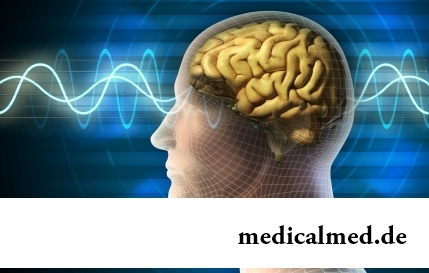
The brain of the person is studied not one hundred years, but the quantity of the riddles connected with this body increases rather, than reducing...
Section: Articles about health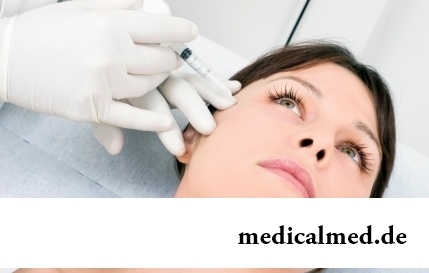
Eyes – one of the most vulnerable areas on a face therefore age changes concern them first of all. Whether it is possible to keep look youth for many years and what procedures are offered for achievement of this purpose by cosmetologists? And maybe, only thing of a vari...
Section: Articles about health
Diapers for adults – individual one-time means of hygiene which in some situations is irreplaceable and from such situations any person is not insured. Though nobody perceives need of their use with enthusiasm, however without such means already problematic situation could be heavier....
Section: Articles about health
Not everyone can brag of the shining Hollywood smile. Even at the person who is regularly visiting the stomatologist and watching з...
Section: Articles about health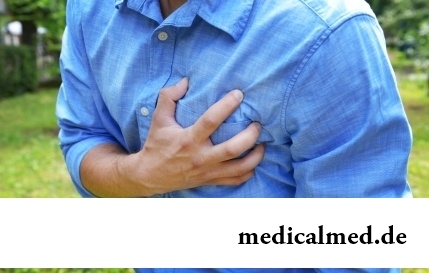
For the time being the perspective of heart diseases seems to most of people remote and foggy. But sooner or later practically each adult faces extremely unpleasant feelings: sudden stethalgia. To be consoled at this time in a thought of t...
Section: Articles about health
What woman does not dream of a beautiful and thick hair? While physicians developed difficult schemes on hair transplant, in the industry of hairdresser's art a few years ago there was a sensation – methods of hair extension appeared. It would seem, dreams came true: though the procedure of building also does not belong to the category cheap, practically any woman can increase several times the volume of hair, change their length and color – generally, to become the real beauty queen....
Section: Articles about health
Life of the modern child is extremely active and difficult. Information strain which is experienced by the school student and did not dream the pupil...
Section: Articles about health
You are office worker, the driver, the fan of winter sports or do not think of life without bicycle? You lead a slow-moving life and you move on the city only on the car? You have no constant partner and you do not love the protected sex? Attention! You one...
Section: Articles about health
It is difficult to revaluate importance of kidneys for an organism. These bodies not only perform work on purification of blood of decomposition products and removal of excess liquid. They are responsible also for production of some hormones necessary for maintenance of a normality of a bone tissue, and also for a producing red blood cells – erythrocytes....
Section: Articles about health
Popular joke that there are no healthy people, and is nedoobsledovanny, most of us considers an honest truth, continually it is necessary to hear that all of us are sick hardly from a school bench. It is hard to say whether so it actually because too often people are treated for nonexistent diseases, and sometimes call a disease what is something another. Sometimes in it the doctors of old school making diagnoses which are cancelled long ago – medicine still unless are guilty...
Section: Articles about health
Cystitis, or inflammation of a mucous membrane of a bladder, this very widespread disease, which, owing to some persons...
Section: Articles about health
Beauty shop – the place which is associated only with positive emotions: joy, pleasure, relaxation. However visit of salon where work with biological material of clients, not always harmlessly is conducted. Today it is known Bol...
Section: Articles about health
Many parents of children at the age of 2-4 years face excessively whimsical behavior of the child. The kid exhausts constant crying and whims not only the parents, but also himself. In what the reasons of children's whims. And how to fight with them?...
Section: Slideshow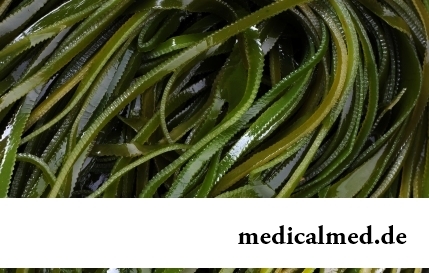
For residents of the countries of Southeast Asia various algas are an obligatory component of a daily diet. Their priest...
Section: Articles about health
Maternal milk is the best food for the newborn. It is the unique natural product containing an optimum set of nutrients, and which is best adapted in order that the baby normally developed and it was protected from harmful fa...
Section: Articles about health
Iodine - one of thirty most important microelements in our organism. The main role of iodine consists in synthesis of thyroid hormones of a thyroid gland - the substances which are responsible for the majority of exchange processes of an organism. It is known that thyroid hormones consist of iodine more than for 65%. The lack of iodine leads to decrease in production of hormones and, as a result, development of a hypothyroidism. The long condition of deficit can become a source of problems of the cardiovascular, bone, digestive SI...
Section: Articles about health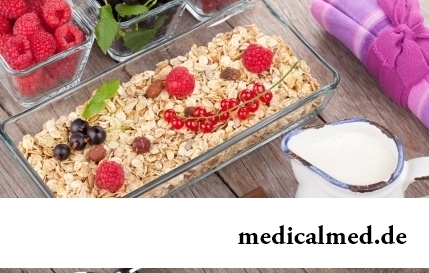
The healthy nutrition is the invariable principle of health and good health for long years of the woman. Nevertheless, in рацио...
Section: Articles about health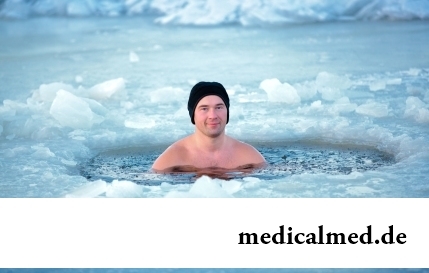
The winter swimming in open reservoirs called in our country by "winter swimming" – officially recognized sport and one of the most extreme ways of a hardening of an organism. This occupation has an old story and adherents in many countries. Are annually carried out...
Section: Articles about health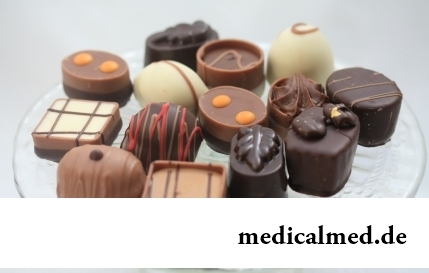
Urogenital candidiasis (milkwoman) – a fungal infection which annoys unpleasant feelings in the field of generative organs, being followed by white curdled allocations, an itch, discomfort during an urination, pain. She is called by Candida fungus – the opportunistic organism living on mucous membranes of an organism....
Section: Articles about health
Such trouble as the milkwoman's attack, at least once in life happened almost to each woman. Prevalence забол...
Section: Articles about health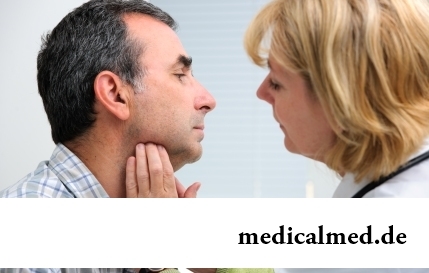
The endocrine system carries out extremely important role in a human body, practically all processes of life activity are regulated by it. Closed glands (hemadens) produce special biologically active agents – hormones which then o...
Section: Articles about health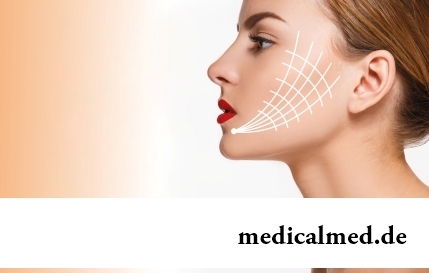
Aging — natural and inevitable process. Over time our skin loses elasticity, on it saggings are formed, the face form loses former clearness. The procedure of nitevy lifting (nitevy tightening) can successfully solve this problem. In order that it is better to get acquainted with this popular procedure, we will tell you 6 cognitive facts about it....
Section: Articles about health



